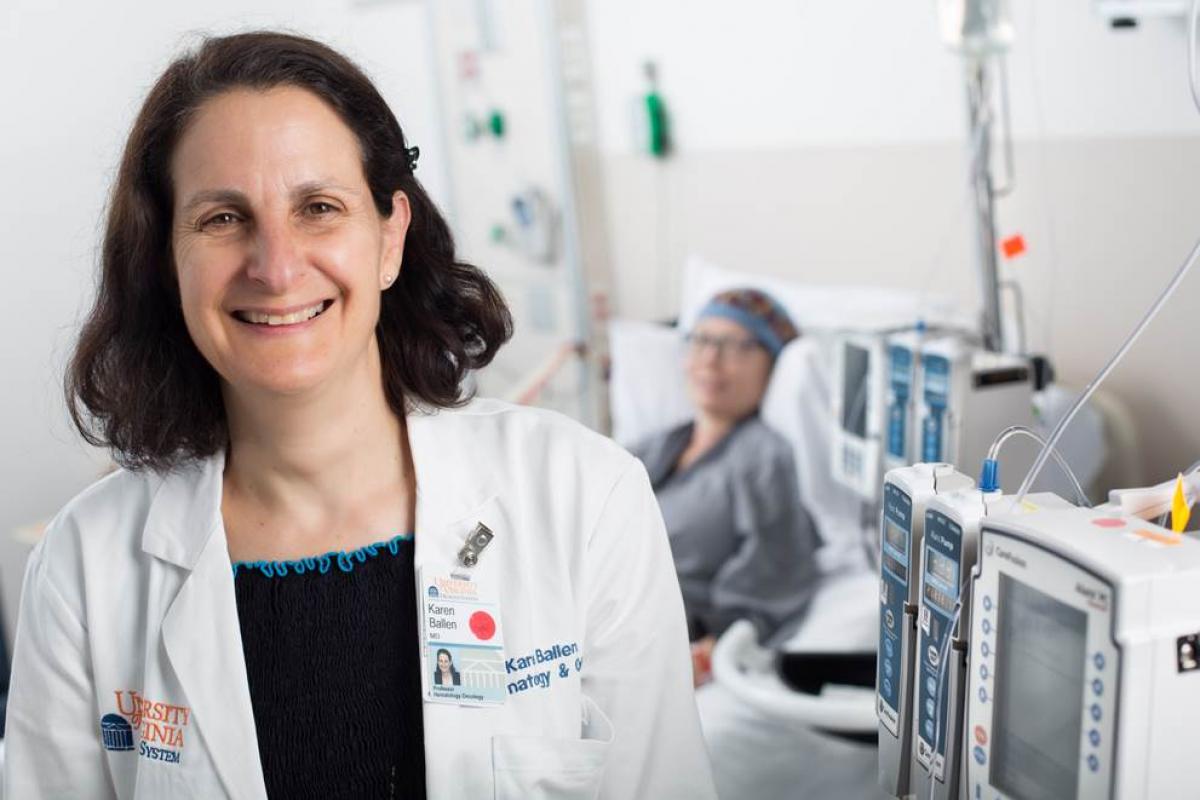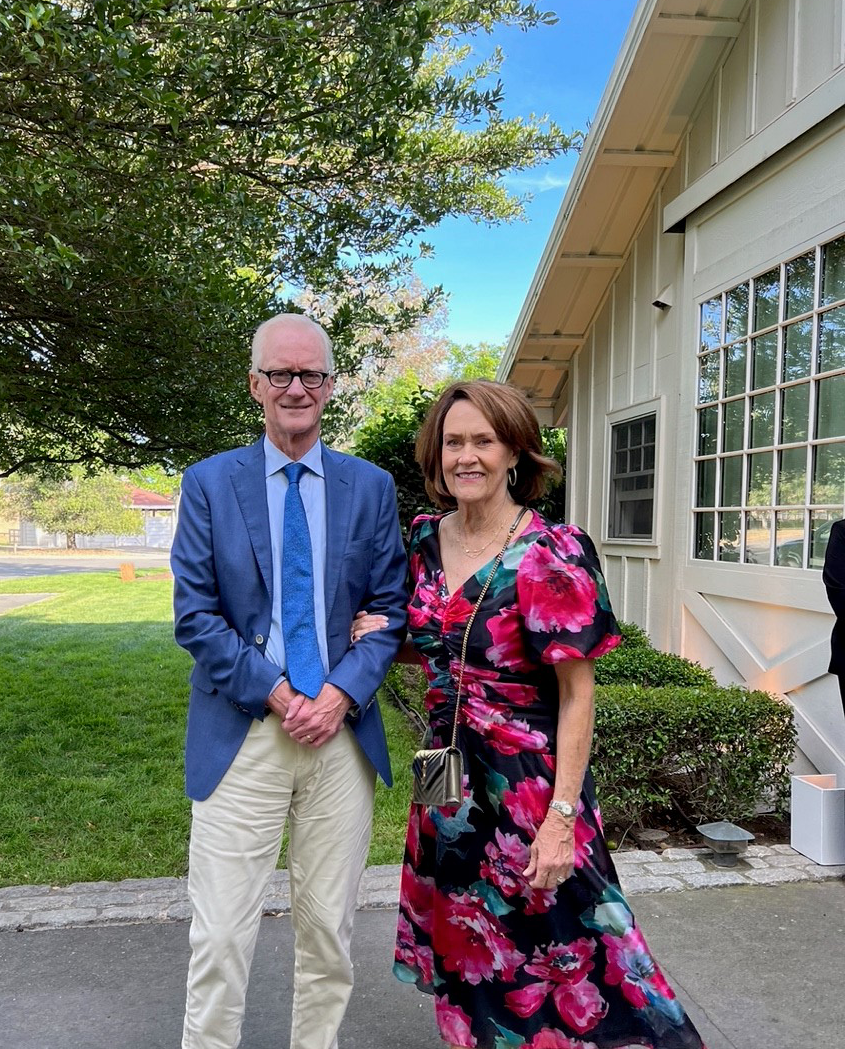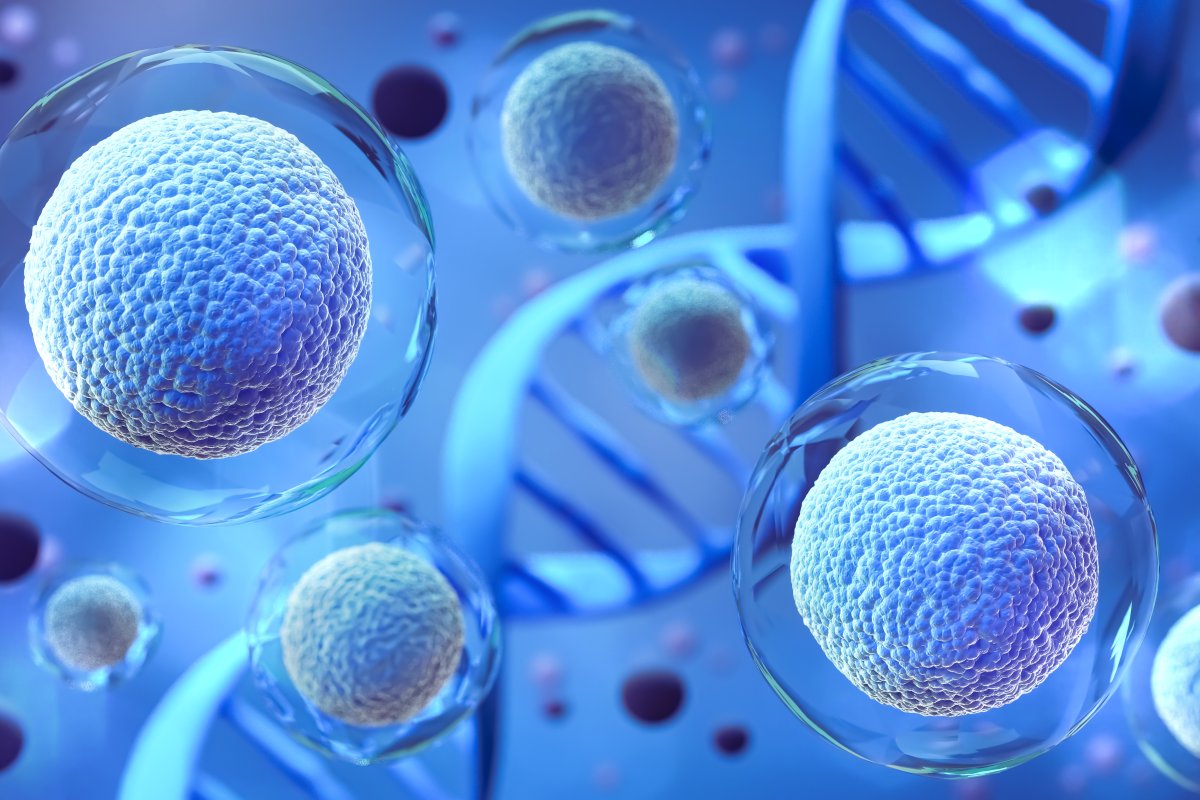Marking Milestones in Stem Cell Transplantation
Performing its 1000th stem cell transplant is just one of many reasons to recognize UVA’s Stem Cell Transplant Program and its world-class researchers and clinical teams, who have made stem cell transplantation safer, more accessible, and more effective in the treatment of deadly blood cancers and other diseases. Stem cell transplantation and cellular therapies are life-saving procedures for many children and adults in our community, and private philanthropy has played a critical role in UVA’s leadership in this area.
When a Transplant Offers Hope
Stem cell transplantation is curative for many children and adults with blood-related cancers such as leukemia, multiple myeloma, and lymphoma. In a typical case, healthy stem cells harvested from a donor are transplanted to replace a patient’s diseased bone marrow cells. The goal is for the transplanted cells to begin making new healthy blood cells. Donors need not be relatives but must be tested for immune system compatibility, and many patients rely on donor registries to find a match. For certain diseases and cases, UVA may perform an autologous transplant of stem cells harvested from the patient themselves before they were treated with high doses of chemotherapy or radiation.
Since UVA’s Stem Cell Transplant Program began in 2012, one of its most significant achievements is the ability to find a donor for almost everyone today. That was not the case ten years ago when identifying a donor with common ancestry—a key to immune system compatibility—was particularly difficult due to the lack of diversity among donor registries. Expanding the pool of donors has been a focus of UVA’s Chief of Hematology and Oncology Karen Ballen, MD, who has directed UVA’s Stem Cell Transplant Program for the last several years and is an international expert in the field. By starting one of the first umbilical cord blood banks in the United States, Ballen helped significantly increase stem cell transplant accessibility. That’s because cord blood cells are what Ballen calls “naïve” from an immune standpoint, meaning they don’t have to be perfectly matched to a patient.

Other key developments of the program include using haploidentical or “half” transplantation—enabling more half-matched family members (parents and children) to donate to each other. More recently, UVA began collaborating with the Be The Match donor registry on a clinical trial to use volunteer donors that are not perfect matches. In addition, UVA Comprehensive Cancer Center’s clinical trials are advancing efforts to prevent and treat infection following stem cell transplantation, reduce and treat a devastating complication called graft-versus-host disease (GVHD), and reduce relapse after the transplant.
It’s because of UVA Cancer Center donors like Mike and Valerie Kirkman that UVA can push the boundaries of stem cell science and translate research discoveries into groundbreaking new treatments within a few years if not months. Mike received a stem cell transplant in 2020 under the direction of Dr. Ballen.
“I had developed a great deal of confidence in her and the transplant went well,” said Kirkman. “Our gift was a pretty easy decision. I simply wanted to give back something to honor those that had saved my life.”

In acknowledging the importance of support like the Kirkmans’, UVA Cancer Center Director Dr. Tom Loughran said, “Private philanthropy helps our researchers speed the pace of their scientific studies and empowers them to compete more successfully for large federal grants and other funding.”
Meeting the Needs of Virginia’s Children and Families
UVA Children’s recently performed its first pediatric stem cell transplant in 20 years! The procedure—an autologous transplant—was performed on a pediatric Hodgkins lymphoma patient who had relapsed after seven years. This procedure was a critical early step in fully establishing a Pediatric Stem Cell Transplant and Cellular Therapy Program at UVA and filling a major gap in care for children in Virginia with life-threatening cancers, bone marrow failure syndromes, immune deficiency syndromes, and other blood and metabolic disorders. Currently, most of Virginia’s kids and teens needing stem cell transplants have to seek treatment far from their homes and even out of state. It’s a terrible burden for families who have to temporarily relocate or be separated during the four or more weeks of their child’s treatment and recovery.
“Bringing stem cell transplant and cellular therapies back to UVA Children’s after two decades was one of my highest priorities when I joined the team here,” said Michael Engel, MD, PhD, chief of pediatric hematology and oncology. “Our patients and families are entitled to receive exemplary, cutting-edge care close to home. They should also feel cared for while it happens.”
Making these young patients and their families feel comfortable and cared for during the lengthy hospital stay associated with stem cell transplantation is exactly what UVA Children’s Manager of Patient-Centered Care Amy Cesak aspires to. Thanks to the support of generous private donors, Cesak is currently working with a designer to remodel the Bone Marrow Transplant (BMT) Unit at UVA Children’s—a suite of four patient rooms and a central playroom.
“BMT Patients have to follow isolation precautions for weeks and possibly even months before and after transplant,” said Cesak.“ Providing a relaxing and cheerful environment and space for personalized support during this extended stay is key to their recovery.”
Lighting, technology, and other design enhancements to the BMT Unit patient rooms are made possible by James and Theresa Knipper and other donors to the Julian Knipper Memorial Fund for Child Life Cancer Programs. UVA Children’s is outfitting the BMT Unit playroom with philanthropic support from the Ishan Gala Foundation.
Leading a Revolution in Cancer Immunotherapy
Another critical development in building UVA Children’s Pediatric Stem Cell Transplant and Cellular Therapy Program is its use of CAR T-cell treatment—a type of immunotherapy for patients with leukemia, lymphoma, and myeloma. It’s one of the newest and most effective cancer treatments available today and involves extracting a small number of the patient’s T-cells (white blood cells) and genetically modifying them to become effective cancer killers. These superhero cells are then infused back into the patient, replicating and forming a cancer-destroying army.
See how UVA's CAR T-cell therapy helped Colin defeat a high-risk type of leukemia and get back to being a kid. (Video courtesy of UVA Health Marketing)
Under the leadership of UVA pediatric oncologist Dr. Daniel “Trey” Lee, UVA Children’s has been performing this life-changing immunotherapy since 2017. Dr. Lee was one of the first in the world to perform CAR T-cell therapy on children and young adults with lymphoblastic leukemia and B-cell lymphomas. He also helped to discover and develop strategies for treating one of the most serious complications of CAR T-cell therapy. And he was part of a research team whose study found that pairing CAR T-cell therapy with a subsequent stem cell transplant in children and young adults with acute lymphoblastic leukemia—the most common childhood cancer—led to far fewer relapses and higher survival rates. UVA Children’s is now the only program in the region to offer both FDA-approved CAR T-cell therapy and clinical trial versions for relapsed and refractory childhood leukemia and B-cell lymphoma.
What’s Next?
UVA Cancer Center’s researchers and healthcare professionals continue to prioritize increased patient access to stem cell transplant care, prevention and treatment of GVHD, reduced relapse, and further expansion of cellular therapies. The Stem Cell Transplant and Cellular Therapy team recently welcomed a new program director, Dr. John Wagner, and is actively recruiting additional experts and faculty who can further build the Center’s leadership in this area.
“I think the future is bright, both for our program and for the field as a whole,” said Dr. Ballen.
Authored by Katherine Ludwig
To learn how you can support UVA Cancer Center’s Stem Cell Transplantation and Cellular Therapy Program, please contact Ashley Hanel, Senior Associate Director of Development, Cancer Programs, at ahanel@virginia.edu or 704.796.2608 or call 800.297.0102.

